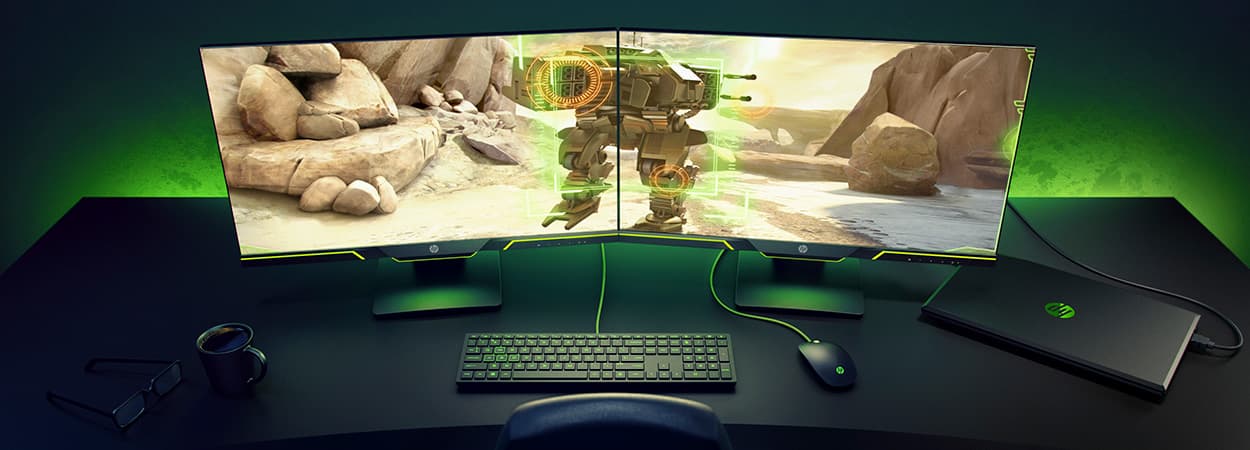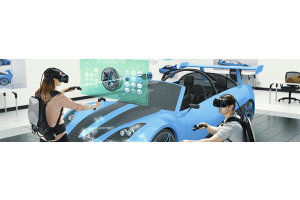We use cookies to offer you a better experience. For more information on how we use cookies you can read our Cookie and Privacy Policy.
How to Build a Gaming Computer

Serious gamers have preferences that are as unique as they are. That’s why, for some, only a custom-built gaming desktop or laptop computer will do when it comes to maximizing performance, style, and personalized details.
Fortunately, you don’t have to be a tech genius or an IT pro to make it happen. Here are the basics of what you need to know so you can build your own gaming computer with less stress and more power than a pre-assembled stock model.
Basic gaming computer components
While there are many products to choose from on the market today, the core components of a gaming PC are standard across all genres.
In fact, there are specific, necessary parts for a gaming computer build, and there are those that are just nice to have. Knowing the difference is important for anyone learning how to build a gaming computer so that you don’t skip an important piece of the puzzle or blow your budget on an extra part you can always add-on later.
Gaming experts recommend you include these parts in your original build:
Processor
If you’ve seen computer commercials or watched your favorite gamer live play on Twitch or YouTube, you know that the processor, or CPU, is mentioned more often than any other part of a gaming computer. That’s because this is the brain of the PC. It shuffles through all the various activities the computer will do, prioritizes them, then makes sure you can do many tasks at one time without lag or freezing up.
While the specs for this part are straight-forward, this may be an important piece to get expert advice on, if possible. While you can save money going with a less impressive processor, it’s potentially devastating to gameplay if you end up with a lackluster product. If you plan to play graphics-heavy, online, or multiplayer games often and for longer periods of time, a better processor won’t disappoint.
Memory
Random access memory (RAM) is short-term memory that lets the computer get to important files in seconds. Like the processor, it is a major contributor to keeping the PC from lagging during play.
Gaming experts recommend a minimum of 8GB of RAM, and many wholeheartedly embrace installing 16GB instead. Not having enough memory or processing speed can cause the computer’s performance to become unstable, so choose wisely for both of these components.
Motherboard
Once you have chosen your internal components, they’ll need a place to communicate with one another. That’s where the motherboard comes into play. This must-have part acts as the central nervous system, making sure all of the pieces can talk to each other and carry out the tasks of the gaming computer.
It’s important to note that your motherboard and processor need to be compatible, so do a little research to make sure they will work together.
Graphics
Looking for a picture-perfect PC gaming experience? Well, you’ll need a graphics card that is up to this task. With the right card, you can watch HD and 4K movies, as well as edit videos and sound, along with all the gaming you’ll be enjoying.
To understand which graphics product you’ll need, it helps to know that there are two kinds of graphics: integrated and discrete (aka “dedicated”). The discrete products are a must-have for the most demanding game titles and they come with their own processor – known as a GPU. Aim for a GPU that boasts FPS (frames per second) of 60 or higher for standard gaming and 90 FPS for virtual reality applications.
Case
Everything you buy needs to be housed in a safe, sturdy, and easy-to-access case. Make sure you choose one that’s large enough to accommodate any expansions down the road and that can handle multiple upgrades during the next few years.

This is also an opportunity to pick something that reflects your personality, because there are some colorful, customizable options available. Led lights mounted internally and wires in complementary colors can make a glass-sided case not only a powerful gaming computer, but a work of art.
Power
The power supply unit (PSU) is not a hot topic of discussion, but it is critical to how your gaming PC performs. Don’t go cheap on this small but mighty part. It is responsible for getting electricity to your custom build - and to all of the various components.
Invest in a quality power supply unit to keep your gaming computer safe from electrical damage.
Cooling system
If your CPU doesn’t come with its own heatsink fan, you’ll need to invest in a stand-alone cooling product. This component is a must-have because of how hot gaming PCs can get over extended periods of use. It can also be a welcome addition to the fan that may come installed in your case.
Whether you choose an air or liquid-cooling option may come down to experience. Novice gamers usually find the air-cooling system to be more affordable and easier to install.
Storage
Do you go with a solid-state drive (SSD) or a hard-disk drive (HDD) with your gaming computer build? The choice is yours and may come down to preference.
Gamers overwhelmingly prefer SSD, in general, opting to pick the NVMe (Non-Volatile Memory Express) protocol over the more traditional SATA. That being said, both are capable of quick response and low latency (that delay while one component finishes and the next can start) under most gaming conditions.
Operating system
The operating system is also frequently referred to as the OS. Many gamers are fine with choosing Windows-based solutions, and Windows OS gives student gamers the flexibility for studying and schoolwork. As long as it works with the most popular games, any OS choice is appropriate.
Add-ons and gaming PC peripherals
Once you have your standard elements in place, it’s time to pick those special details that make your machine all your own.

Everything from custom case overlays to colorful backlit gaming keyboards and ultrawide curved monitors can be used to tailor your gaming experience to just what you need. The beautiful thing about this second category of components is that they can easily be upgraded and replaced as your gaming tastes change.
For anyone wanting to know how to build a gaming PC, here are some more opportunities to show off your playing style through gaming accessories and peripherals:
- Gaming keyboard (with extra keys/buttons)
- Gaming mouse
- Gaming headset
- Additional gaming displays
- VR backpack and gear
- Customized software
- External hard drives
- Speakers and subwoofers
- Eye protection (screens and glasses)
Should You Build a Gaming Laptop?
While the more popular choice is to build a gaming desktop, the portability of a laptop can’t be dismissed. By its design, all of the components of a laptop are fully enclosed, making it a difficult task to assemble on your own. That’s why most custom gaming builds are desktops, especially for novice builders.
However, there is a little bit of flexibility with buying a gaming laptop because you can customize certain elements like RAM during the ordering process.
Today’s gaming laptops are also increasingly optimized to accommodate external components and peripherals to make them operate more like a desktop. The HP OMEN X laptop, for example, is HP OMEN’s first overclockable laptop and a legitimate contender for competitive gamers.
For a truly customized experience, today’s gamers can benefit from learning how to build a gaming computer that can meet or exceed their most rigorous expectations.
Personalized and powerful gaming is here at HP®, with a do-it-yourself, build-your-own, one-of-a-kind experience waiting for every PC gamer.
About the Author: Linsey Knerl is a contributing writer for HP® Tech Takes. Linsey is a Midwest-based author, public speaker, and member of the ASJA. She has a passion for helping consumers and small business owners do more with their resources via the latest tech solutions.
Article reposted with permission from HP Tech Takes






